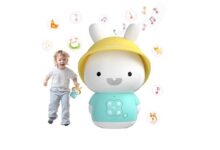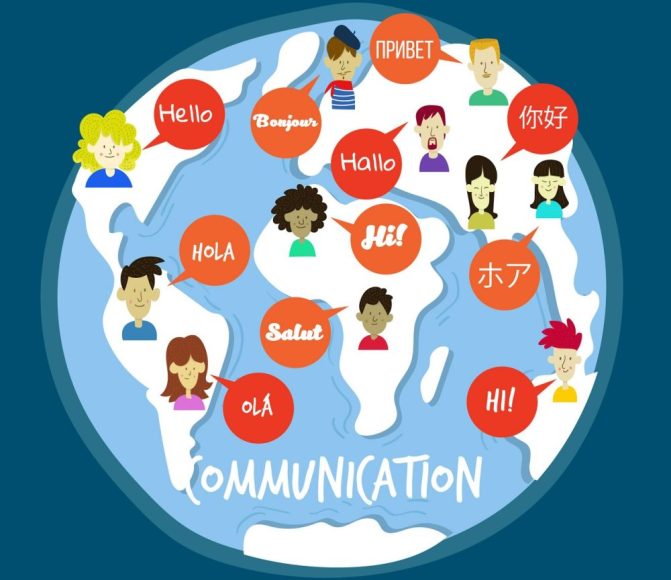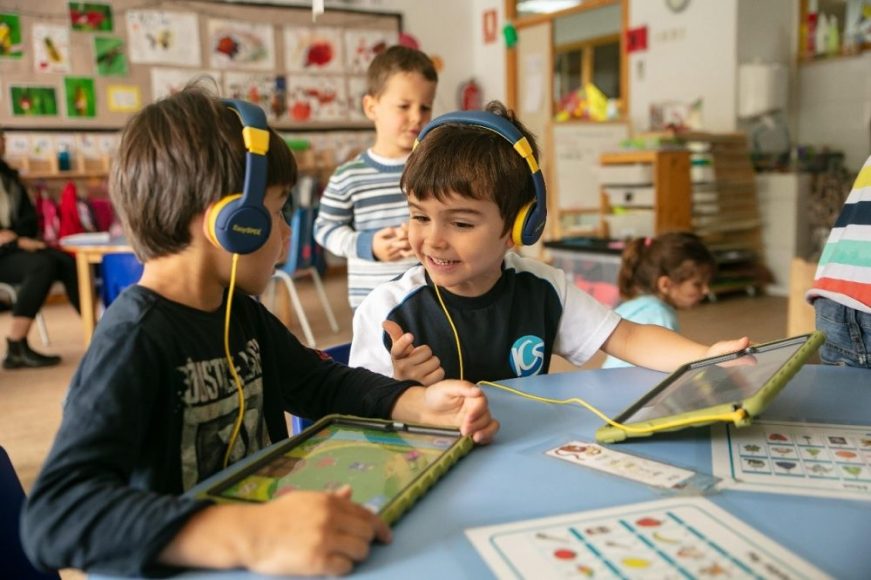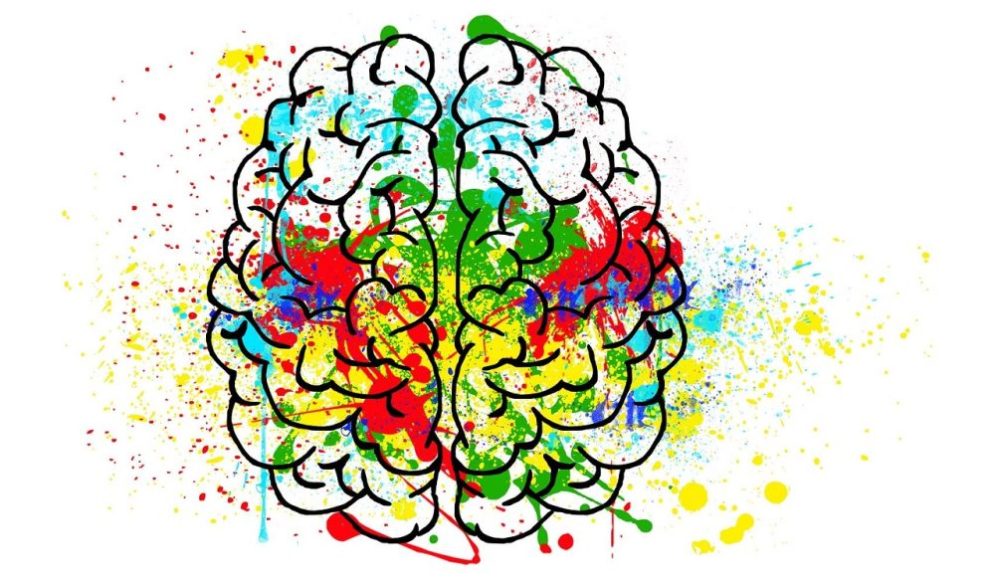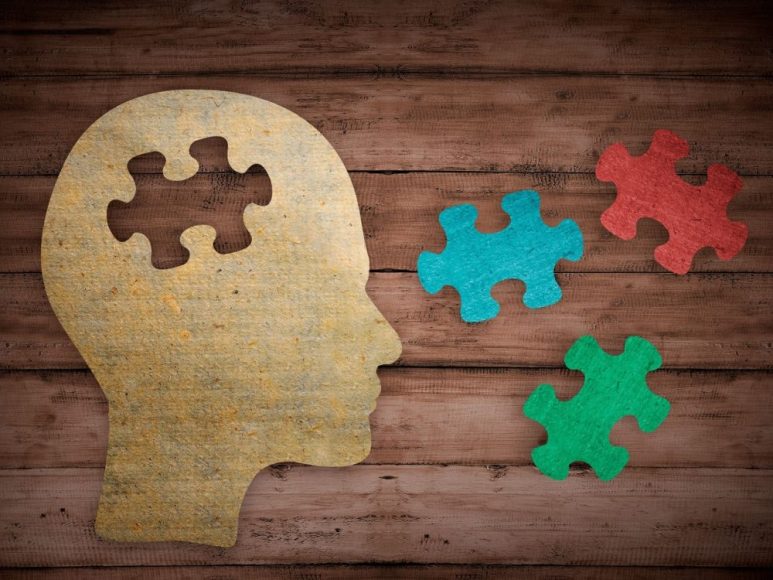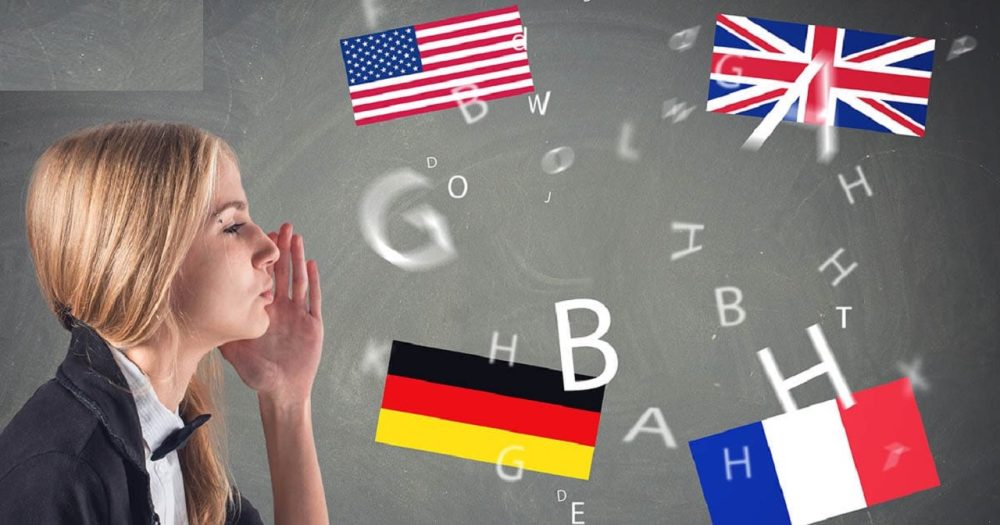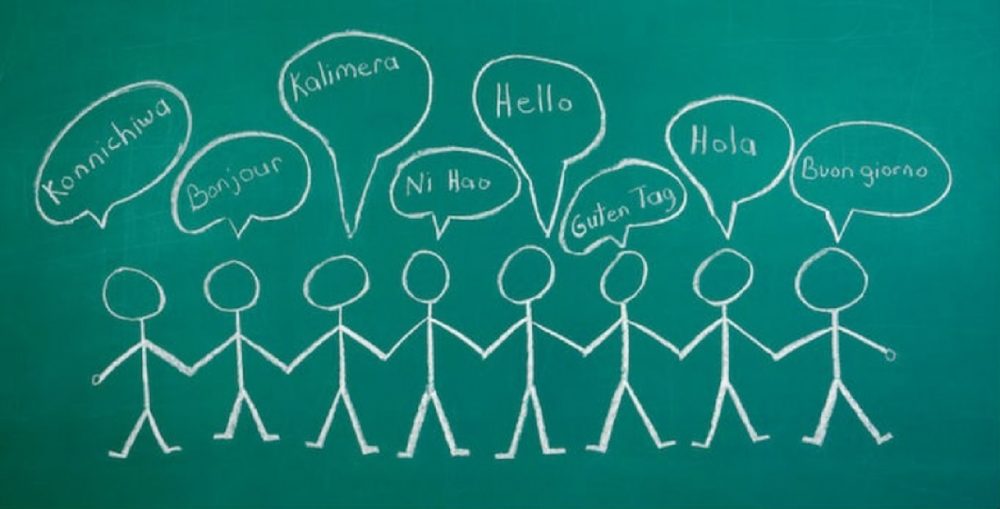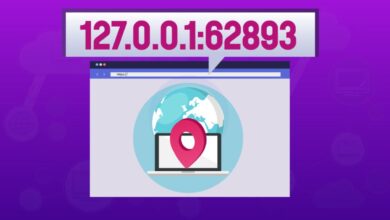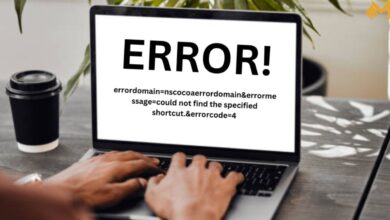Bilingual Education Power: Unlocking Student Benefits
Empowering Minds, Embracing Cultures: The Transformative Journey of Bilingual Education
Welcome, young learners, to the fascinating world of bilingual education! Have you ever wondered how learning more than one language can make you smarter and open up a whole new world of exciting opportunities?
Today, we’ll explore the incredible advantages of multilingual education, where students like you get the chance to speak, read, and write in multiple languages. With this incredible superpower, you’ll discover enhanced brain development, improved problem-solving skills, and a deeper understanding of different cultures.
So, let’s embark on this educational journey together, and uncover the wonders that await with the key to bilingual education. Are you ready? Let’s dive in!
Cognitive Benefits of Bilingual Education
Welcome back, young learners, to our exploration of the wonders of bilingual education! In this section, we’ll uncover the amazing cognitive advantages that come with learning more than one language.
Experience brain growth with every word learned, unlocking enhanced cognitive abilities and new opportunities. So, let’s dive into the world of multilingual education and discover the extraordinary cognitive benefits it offers!
Enhanced Brain Development
Learning multiple languages through bilingual education supercharges your brain’s growth and development. As you engage in language learning, various regions of your brain are activated, strengthening neural connections and expanding brain capacity.
This process of language acquisition creates a remarkable network of knowledge, empowering you to excel in both linguistic and non-linguistic tasks. Learning more languages strengthens your brain, like a muscle gaining agility and robustness through exercise.
Improved Executive Functions
With multilingual education, your brain’s executive functions are given a substantial boost. Executive functions refer to the set of mental processes responsible for tasks such as planning, attention, problem-solving, and decision-making.
Switching languages and making context-based decisions sharpens executive functions, enhancing efficiency and cognitive abilities. This newfound mental agility helps you organize your thoughts, prioritize tasks, and excel academically.
Increased Cognitive Flexibility
Bilingual education fosters cognitive flexibility, a valuable skill that allows you to adapt to new situations, ideas, and challenges.
Navigating two languages flexes your brain’s cognitive muscles, adeptly handling diverse linguistic structures and cultural nuances. Shifting between languages broadens perspectives, enhancing creativity and problem-solving skills through diverse ways of thinking.
Better Problem-Solving Skills
With Dual-language education, you become a proficient problem solver. Learning multiple languages enhances problem-solving by offering diverse angles, expressions, and phrases to tackle specific issues.
This cognitive diversity empowers you to think outside the box and find innovative solutions to complex problems. Bilingual students are often known for their resourcefulness and adaptability, making them outstanding critical thinkers in any situation.
Academic Advantages of Multilingual Education
Welcome back, young explorers, as we continue our journey through the captivating world of bilingual education! In this section, we’ll unravel the extraordinary academic advantages that await you when you embark on the exciting path of learning multiple languages.
Discover how multilingual education boosts language proficiency, math skills, and cultural appreciation, elevating your learning journey. So, let’s dive into the realm of Dual-language education and uncover the remarkable academic benefits it bestows upon curious minds like yours!
Improved Language Skills
Bilingual education fosters improved language skills, enabling students to communicate fluently in multiple languages. Language immersion and active practice build speaking, reading, and writing proficiency, expanding cognition and embracing diverse cultures.
Improved language skills enrich lives, creating global citizens with limitless opportunities. Join the illuminating adventure to discover how multilingual education nurtures remarkable language skills. Let’s embark together!
Proficiency in Multiple Languages
Through bilingual education, you will unlock the incredible ability to become proficient in multiple languages. Immerse in diverse linguistic environments, flourishing language skills, and communicate fluently with people from various backgrounds. Embrace the joy of multilingual conversations, discovering connections and friendships that span across cultures.
Enhanced Reading and Writing Abilities
Dual-language education not only sharpens your spoken language skills but also boosts your reading and writing abilities.
As you delve into literature and written works from various cultures, your comprehension and interpretation skills soar. Expressing thoughts in writing becomes effortless, as your brain adeptly crafts eloquent prose in multiple languages.
Boosted Math and Analytical Skills
Surprisingly, multilingual education also leads to a significant boost in your math and analytical skills. Studies reveal bilingual students excel in problem-solving due to enhanced cognitive flexibility, approaching challenges from diverse angles. Newfound analytical prowess leads to success in mathematics and logical disciplines, paving a future of limitless possibilities.
Greater Understanding of Cultural Diversity
In the vibrant world of cross-lingual education, you’ll gain a deep appreciation for cultural diversity. By learning multiple languages, you’ll immerse yourself in various traditions, customs, and perspectives, fostering a profound understanding of different cultures. Cultural awareness enriches academics and fosters compassionate global citizenship, embracing and celebrating diversity in all its forms.
Social and Cultural Benefits
Hello again, young adventurers, as we delve deeper into the captivating realm of Dual-language education! In this segment, we will explore the enriching social and cultural benefits that await you on your language-learning journey.
Experience how multilingual education nurtures cultural awareness, empathy, identity, belonging, and cross-cultural communication skills. So, let’s embark on this multicultural adventure and discover the incredible social and cultural treasures that bilingual education has to offer!
Increased Cultural Awareness and Empathy
With Dual-language education, you will gain a profound understanding and appreciation for diverse cultures from around the world.
Exploring languages, customs, and traditions blooms cultural awareness, fostering open-mindedness and acceptance of diverse backgrounds. Multiple languages foster empathy, deep connections, and a celebration of humanity’s beautiful cultural diversity.
Stronger Sense of Identity and Belonging
Embrace the magic of multilingual education, for it bestows upon you a stronger sense of identity and belonging. Learning about heritage language and culture cultivates pride and a sense of belonging to your roots.
Simultaneously, exploring new languages allows you to connect with a global community, creating a sense of belonging to the wider world. Bilingual students harmonize cultural heritage with a global perspective, confidently navigating life’s rich tapestry.
Better Cross-Cultural Communication
One of the most exciting social benefits of cross-lingual education is the ability to communicate effectively across cultures. When you speak multiple languages, you effortlessly bridge linguistic barriers, facilitating meaningful connections with people from diverse backgrounds. Cross-cultural communication skills create exciting friendships and opportunities, building a network beyond borders and boundaries.
Economic Opportunities
Hello once more, young learners, as we continue our fascinating journey into the realm of multilingual education! In this section, we will unveil the remarkable economic opportunities that await those who embark on the path of language mastery.
Discover how bilingual education boosts global competitiveness, and job market value, and attracts international opportunities. So, let’s set forth on this exciting voyage of economic discovery and uncover the endless possibilities that multilingual education brings to your future!
Global Competitiveness
Dual-language education equips you with a superpower that enhances your global competitiveness. In an increasingly interconnected world, proficiency in multiple languages becomes a prized skill that sets you apart from others.
By effortlessly communicating and connecting with people from diverse linguistic and cultural backgrounds, you become a valuable asset to companies and organizations with international operations. A global perspective eases navigation in the expanding world economy, paving the path to success.
Language Skills in the Job Market
Embrace the power of multilingual education, as it bestows upon you a key advantage in the job market. Language proficiency is sought after by employers, expanding business reach to global markets and forging meaningful connections worldwide.
Whether it’s in the fields of business, diplomacy, healthcare, or technology, your bilingual abilities will open doors to a wide array of career opportunities, giving you a head start in your professional journey.
Attracting International Opportunities
With cross-lingual education, you become a magnet for international opportunities. Your language skills make you an ideal candidate for study abroad programs, international internships, and cross-cultural exchange programs.
These experiences not only enrich your education but also expand your global network, creating pathways for future collaborations and ventures. Bilingual students are often sought after for international assignments, providing them with the chance to work and thrive in various countries, immersing themselves in new cultures and broadening their horizons.
Dual-language Education and Brain Plasticity
Hello, curious young minds, as we venture into a fascinating topic in our exploration of Dual-language education! In this section, we’ll delve into the captivating world of brain plasticity and its profound connection to language learning.
Prepare to witness how multilingual education interacts with the brain’s plastic nature, and discover how your brain is primed to embrace the wonders of multiple languages. So, let’s set forth on this enlightening journey into the realm of brain plasticity and bilingual education!
The Critical Period Hypothesis
The critical period hypothesis suggests that there is a prime window of time during which the brain is exceptionally receptive to language acquisition. In early childhood, particularly before the age of 7, the brain exhibits remarkable plasticity, absorbing and processing new languages with astounding ease.
This period is when young children possess a unique ability to acquire native-like pronunciation and linguistic fluency in multiple languages. As you explore the realm of cross-lingual education during this critical period, you unlock your brain’s full potential, paving the way for a lifelong love of languages and an array of cognitive benefits.
Harnessing Brain Plasticity through Dual-language Education
Multilingual education offers a marvelous opportunity to harness the brain’s plasticity for language learning. As you engage in language immersion and active language practice, your brain undergoes remarkable transformations, with neural connections rapidly forming and strengthening.
With each new word and phrase you learn, your brain adapts and reorganizes, creating a cognitive landscape that accommodates multiple languages. Embrace the magic of bilingual education during this formative period, and you’ll find yourself becoming a confident and capable communicator in diverse linguistic environments.
Addressing Concerns and Myths
Hello again, inquisitive young learners, as we navigate through the intriguing world of cross-lingual education! In this section, we shall shed light on common concerns and myths surrounding language learning. Prepare to discover how multilingual education addresses these apprehensions, ensuring a seamless and enriching language journey.
So, let’s embark on a reassuring exploration of the truths that dispel doubts about language interference and delayed language development, the balanced approach to academic requirements and language learning, and the harmonious coexistence of cultural assimilation and preservation in the realm of Dual-language education.
Language Interference and Delayed Language Development
One common concern is that multilingual education may lead to language interference, where a student mixes elements of one language into another. However, research shows that language interference is a normal part of the language-learning process and often resolves naturally with continued exposure and practice.
Moreover, Dual-language education fosters a strong foundation in both languages, ensuring that any minor interference is temporary. Additionally, some may worry that bilingual education might cause delayed language development.
On the contrary, studies demonstrate that bilingual children often reach language milestones at a similar pace to monolingual children, and their language abilities catch up quickly, with long-term benefits in linguistic and cognitive abilities.
Balancing Academic Requirements and Language Learning
Concerns may arise about the integration of language learning with academic requirements. However, well-designed multilingual education programs strike a harmonious balance between core subjects and language acquisition.
By incorporating language learning into various aspects of the curriculum, students gain language proficiency while excelling in other subjects. Bilingual educators carefully plan their lessons to ensure that language development aligns with academic goals, creating an enriched and comprehensive learning experience for students.
Cultural Assimilation vs. Cultural Preservation
A myth surrounding cross-lingual education is that it promotes cultural assimilation, eroding students’ cultural identities. However, multilingual education celebrates diversity and actively encourages cultural preservation.
Through exposure to various languages and cultures, students gain a deep appreciation for their heritage and the cultural heritage of others. Dual-language education fosters a sense of pride in cultural identity while fostering cross-cultural understanding, creating a cohesive environment where diverse backgrounds are valued and cherished.
Successful Cross-Lingual Education Models
Hello once more, young language enthusiasts, as we embark on an exciting journey into the world of successful multilingual education models! In this section, we’ll explore three dynamic approaches that have proven to be effective in nurturing bilingual skills and fostering a deep appreciation for diverse languages and cultures.
Prepare to be amazed by the brilliance of dual language immersion programs, the ingenuity of Content and Language Integrated Learning (CLIL), and the richness of heritage language programs. So, let’s set forth on this enlightening adventure and discover the magic behind these successful cross-lingual education models!
Dual Language Immersion Programs
Dual-language immersion programs are a shining example of Dual-language education excellence. In these programs, students learn core subjects, such as mathematics, science, and social studies, in both their native language and a target language.
The goal is to promote balanced bilingualism, enabling students to become proficient in both languages while excelling academically. This immersive experience allows children to communicate naturally in real-life situations, fostering language development and cultural understanding.
Through collaboration and interaction with peers from diverse linguistic backgrounds, students build a strong foundation of linguistic and cross-cultural skills, shaping them into global citizens with boundless opportunities.
Content and Language Integrated Learning (CLIL)
Content and Language Integrated Learning (CLIL) is a creative bilingual education model that seamlessly blends language learning with subject-specific content. In CLIL programs, students acquire a new language while studying subjects like history, geography, or arts.
By using the target language to explore academic topics, students not only deepen their linguistic skills but also gain a deeper understanding of the subject matter. This innovative approach creates a meaningful and engaging learning experience, igniting students’ curiosity and motivation.
As a result, learners develop language proficiency while becoming knowledgeable in various disciplines, preparing them to excel in diverse academic and professional pursuits.
Heritage Language Programs
Heritage language programs celebrate the rich cultural diversity within communities. These programs are designed for students who have a connection to a language spoken at home or within their cultural background.
Heritage language programs aim to preserve and promote these languages, allowing students to deepen their understanding of their heritage and heritage-speaking communities. By nurturing heritage languages, students develop a strong sense of identity and pride, fostering a bridge between their cultural roots and the wider world.
Heritage language programs not only enrich students’ language skills but also cultivate a profound appreciation for cultural diversity and a sense of belonging to a global community.
Tips for Implementing Cross-Lingual Education
Hello again, young language enthusiasts, as we delve into the realm of practical wisdom in our exploration of Dual-language education!
In this section, we will uncover essential tips for successfully implementing multilingual education programs. Prepare to learn how emphasizing multilingualism in curricula, training and supporting bilingual educators, and fostering inclusivity and respect create an enriching and supportive language-learning environment.
So, let’s embark on this insightful journey and discover the key strategies that ignite the magic of bilingual education!
Emphasizing Multilingualism in Curricula
To make multilingual education flourish, schools must emphasize multilingualism in their curricula. Integrating language learning across various subjects empowers students to use their newfound linguistic skills in real-life contexts.
Teachers can introduce cultural aspects of the languages, organize language-related activities, and encourage students to communicate in multiple languages. By infusing multilingualism into the daily educational experience, schools cultivate an appreciation for diverse languages and cultures, laying the foundation for an inclusive and dynamic learning environment.
Training and Supporting Bilingual Educators
Dual-language education thrives when educators are well-prepared and adequately supported. Offering specialized training to teachers equips them with the pedagogical tools to effectively teach in bilingual settings.
Training can include language proficiency development, cultural competency workshops, and instructional strategies tailored to the needs of bilingual learners.
Additionally, schools must provide ongoing support to educators through mentorship programs, professional development opportunities, and collaborative learning communities. Empowering educators in this way ensures that they can inspire and guide students on their language-learning journey with confidence.
Fostering Inclusivity and Respect
A vital aspect of successful multilingual education is fostering inclusivity and respect among students and staff. Creating a welcoming and supportive atmosphere where diverse languages and cultures are celebrated is essential.
Schools can organize multicultural events, language exchange programs, and cultural showcases, encouraging students to share their language backgrounds and traditions. Moreover, promoting empathy and understanding among students helps build strong bonds, facilitating language practice and cross-cultural communication.
By nurturing a community that embraces and values linguistic diversity, schools nurture a sense of belonging for all students, making the language-learning experience even more enriching.
The Future of Bilingual Education
Hello once more, young language visionaries, as we embark on an exciting journey into the future of cross-lingual education!
In this section, we shall explore the boundless possibilities that lie ahead, where policy implications and support, expanding access to multilingual education, and the role of technology converge to shape the landscape of language learning.
Prepare to witness how the future of Dual-language education holds the promise of a world where multilingualism thrives and language barriers are dissolved. So, let’s set forth on this illuminating expedition and discover the bright horizon that awaits the world of bilingual education!
Policy Implications and Support
The future of cross-lingual education is intertwined with robust policy implications and support from governments and educational institutions. As awareness of the benefits of bilingualism grows, policymakers are recognizing the importance of integrating language learning into educational frameworks.
By establishing policies that promote and prioritize Dual-language education, schools will receive the necessary resources and guidance to implement effective language programs.
Additionally, supportive policies foster collaboration among educators, parents, and communities, creating a unified effort to nurture language skills and cultural understanding among students.
Expanding Access to Bilingual Education
In the future, efforts will be made to expand access to bilingual education, making it more inclusive and accessible to students from diverse backgrounds. This includes addressing language disparities and providing opportunities for students to learn languages beyond their native tongue.
Schools may introduce new language offerings and innovative learning models, enabling students to explore multiple languages in a supportive and encouraging environment.
By breaking down barriers to language learning, more students will have the chance to embrace the wonders of multilingual education and unlock its transformative benefits.
The Role of Technology in Bilingual Learning
Technology is poised to play a significant role in the future of cross-lingual education. Advancements in language learning apps, virtual classrooms, and online resources will make language acquisition more interactive, engaging, and personalized.
Technology will enable students to connect with native speakers and practice their language skills in real-life scenarios. AI-powered language tutors will offer adaptive and tailored learning experiences, catering to individual learning styles and needs.
Embracing technology in multilingual education will not only make language learning more accessible but also create a global community of language enthusiasts, fostering cross-cultural collaboration and understanding.
Conclusion
In conclusion, dear young language enthusiasts, the power of bilingual education is a wondrous journey of discovery and growth. Through this enlightening exploration, we have unraveled the incredible cognitive advantages, academic benefits, social and cultural treasures, economic opportunities, and the limitless possibilities that lie ahead in the realm of multilingual education.
As you embrace the magic of learning multiple languages, remember to emphasize multilingualism in your curricula, support and empower your educators, and foster inclusivity and respect within your learning communities.
The future of cross-lingual education holds the promise of a world where language barriers are dissolved, and a tapestry of diverse cultures thrives harmoniously. So, go forth with the passion to explore new languages and embrace new cultures.
Don’t forget to share this amazing information with your friends and family, and let us know your thoughts in the comments below. Together, we can unlock the full potential of bilingual education and embark on a path of limitless knowledge and understanding. Happy language learning!



